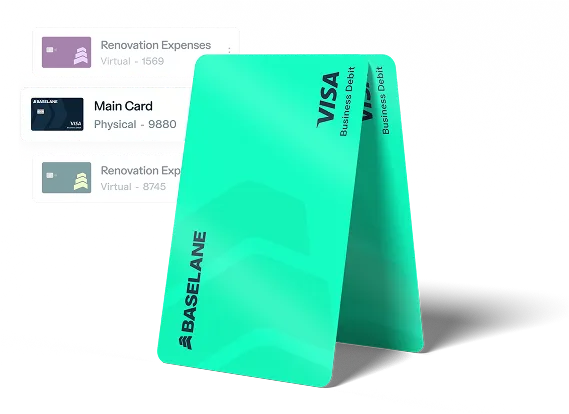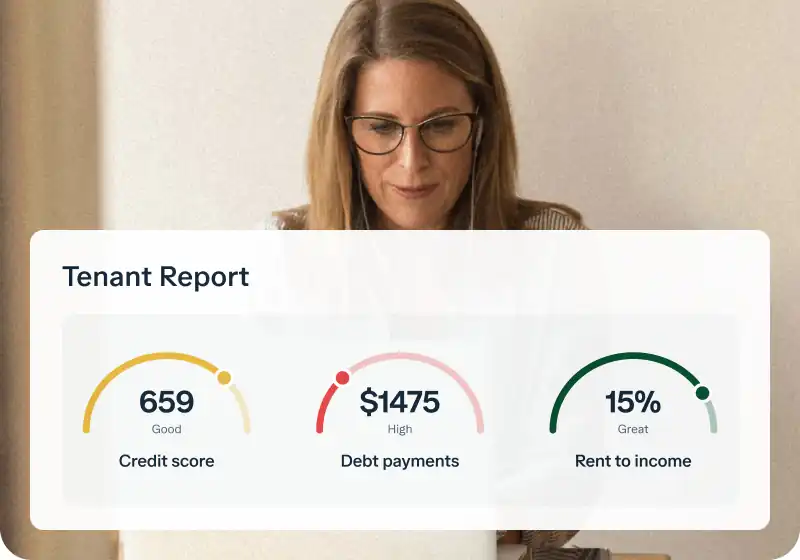You took the leap and became a landlord, embracing the simple sole proprietorship structure.
But now, the tax paperwork is getting out of hand.
You're constantly stressed about the possibility of mixing your money, terrified of missing a key tax deduction, and unsure if you're set up for IRS compliance. This friction can drain the time and passive income you’re working hard to build.
In this guide, we’ll share all you need to know to file sole proprietorship taxes with confidence.
Key takeaways
- A sole proprietorship is the simplest legal structure for a new or small rental property business, as it doesn't require separate formation or registration.
- You report all your rental income and expenses directly on your personal Form 1040 using Schedule E (for rental properties) or potentially Schedule C (if your activity is considered a full-time business).
- Key sole proprietorship tax deductions for landlords include mortgage interest, property taxes, repairs, maintenance, and depreciation.
- To manage the commingling of personal and business funds, which can complicate taxes and threaten asset protection, you should always maintain separate business bank accounts for your rental properties.
What is a sole proprietorship?
A sole proprietorship is a business that's owned and run by one individual, and for tax purposes, there is no legal separation between the owner and the business. You are the business, and the business is you. This means that, unlike a limited liability company (LLC), you don't have to file any special paperwork with the state or the Internal Revenue Service (IRS) to create it; you simply start operating a business, such as buying and renting out a property.
Since a sole proprietorship is considered a "disregarded entity" by the IRS, all profits and losses flow directly to your personal income tax return. This is why it's also referred to as a pass-through entity.
Filing taxes as a sole proprietor landlord: Forms, schedules, and tax rates
When you operate a rental property as a sole proprietorship, you report your financial activity using one of two primary IRS tax forms, depending on the nature of your rental activity.
Schedule E: Supplemental income and loss
Most real estate investors file their rental income and expenses using Schedule E, Supplemental Income and Loss. This is the correct form if you treat your properties as a passive investment, meaning your involvement is primarily oversight and management rather than a full-time, active business. This schedule will track all your rental income and allowable deductions for the year, resulting in a final net profit or loss that carries over to your personal Form 1040.
Schedule C: Profit or loss from business
If your real estate activities are substantial enough to be considered a full-time trade or business—for instance, if you're a real estate professional or actively involved in the day-to-day operations for a significant amount of time—you would file using Schedule C, Profit or Loss from Business. The distinction is critical because Schedule C exposes you to the self-employment tax (Social Security and Medicare), which generally doesn't apply to typical rental income reported on Schedule E.
Sole proprietorship tax rates
Your rental profits from a sole proprietorship are taxed at your personal income tax rate, which includes federal and, if applicable, state and local taxes. There is no separate "business tax rate" because the income is simply added to your other personal income (like wages, interest, etc.).
To simplify your annual filing and ensure you use the correct Schedule (E or C), keep your rental income and expenses separate from your personal finances. Using a banking platform like Baselane, you can tag all your rental transactions as per the Schedule E reporting to avoid last-minute hassle during the tax season.
“I've used Baselane for 3 years now, I am really happy with the service, especially around tax time when all I need to do is download the tax package and send it to my accountant.” ~ Bee, U.S based real estate investor
Sole proprietorship tax write-offs and deductions for landlords
One of the biggest advantages of owning a rental property, regardless of your structure, is the ability to deduct nearly all operational costs and a significant portion of the property's value. For a sole proprietor landlord using Schedule E, these rental property tax write-offs can reduce your taxable income.
Key deductible expenses include:
- Mortgage interest: The largest deduction for most investors, covering the interest paid on your rental property mortgage.
- Property taxes: Taxes assessed on the real estate are fully deductible.
- Operating expenses: Routine costs to run the business, such as maintenance fees, utilities, and insurance premiums.
- Repairs: Costs to fix damage or keep the property functional (e.g., replacing a broken window) are immediately deductible.
- Professional services: Fees paid to lawyers, accountants, or property managers.
- Landlord software and tools: The cost of property management and bookkeeping software is deductible as a business expense.
- Depreciation: This is a non-cash deduction that allows you to recover the cost of the property (excluding land value) over its useful life, typically 27.5 years. This is often your largest deduction and can create a paper loss even when you're cash-flow positive.
Pass-through taxation and key sole proprietor tax advantages
The biggest tax benefit of establishing a sole proprietorship for a landlord is its simple pass-through taxation, which offers two critical benefits to landlords.
1. Offsetting passive losses
If your deductible expenses (especially depreciation and mortgage interest) are greater than your rental income, your rental activity will generate a passive loss for the year. This loss flows directly to your personal tax return (Form 1040) and can be used to offset other passive income you may have.
Additionally, under certain conditions, a non-real estate professional may be able to deduct up to $25,000 of rental real estate losses against non-passive income (like wages) if their modified adjusted gross income (MAGI) is below $100,000.
2. Qualified business income (QBI) deduction
As a sole proprietor, your rental income may qualify for the Qualified Business Income (QBI) deduction (or Section 199A deduction). This allows you to deduct up to 20% of your net rental income, significantly lowering your effective tax rate. This is available if your rental activity rises to the level of a "trade or business," which usually requires a consistent, sustained effort in management and leasing, often determined by a 250-hour-per-year safe harbor test.
How to pay quarterly sole proprietorship taxes
Unlike a W-2 employee, the IRS doesn't have an employer automatically withhold income tax from your sole proprietorship's profits. This means that as an independent landlord, you're responsible for paying your income tax (and self-employment tax, if applicable) yourself throughout the year via quarterly estimated tax payments.
You must make estimated tax payments if you expect to owe $1,000 or more in federal tax for the year. Failure to pay on time can result in penalties. The four quarterly due dates are generally:
- April 15
- June 15
- September 15
- January 15 (of the following year)
Consult with a tax professional to accurately calculate your estimated tax liability.
The sole proprietorship trade-off: Unlimited personal liability
While the sole proprietorship is easy to set up, it comes with a major legal and financial vulnerability: unlimited personal liability. Since there is no legal barrier between you and the business, your personal assets—like your primary residence, personal bank accounts, and non-rental investments—can be at risk.
This means if your rental property business faces a significant lawsuit (e.g., tenant injury) or incurs substantial debt, a plaintiff or creditor can pursue your personal wealth to satisfy a judgment.
To protect against such liabilities, follow these two best practices.
- Get insurance: The first line of defense is a robust umbrella insurance policy, in addition to standard landlord insurance, to protect against large claims.
- Separate your funds: Maintaining a separate business bank account for all rental income and expenses is critical. If you were ever sued, commingling personal and business funds can weaken any asset protection your state or legal entity (if you later form an LLC) might offer.
Tax implications of closing a sole proprietorship
If you sell your last rental property or decide to change your business structure (e.g., transition to an LLC), you essentially end the sole proprietorship's rental activity. There is no formal dissolution process with the IRS for the entity itself, but you will have final tax requirements:
- Final Schedule E/C: You'll file one last Schedule E or Schedule C to report the business activity up to the sale date.
- Reporting the sale: The sale of the property itself must be reported, typically using Form 4797, Sales of Business Property, to calculate the gain or loss.
- Basis and depreciation recapture: You will need to calculate your adjusted basis (original cost plus improvements, minus accumulated depreciation) to determine the capital gain. The amount of depreciation you claimed over the years will be subject to a special tax called depreciation recapture, taxed at a maximum federal rate of 25%.
File sole proprietorship taxes with confidence
The sole proprietorship is the simplest way to start your U.S. rental property business, offering straightforward filing on your personal tax return and access to powerful deductions like depreciation.
As you grow your portfolio and move beyond one or two properties, you'll need an all-in-one financial solution that eliminates manual work and keeps your finances organized for tax time.
Baselane is purpose-built for the modern landlord, offering an integrated banking solution with unlimited property-specific virtual accounts, automated rent collection, and built-in bookkeeping to auto-tag every transaction for easy Schedule E reporting. Get rid of the spreadsheet and simplify your finances with Baselane. Open your account today.
FAQs
FAQs
What is the tax form for a sole proprietor landlord?
Most sole proprietor landlords file their rental income and expenses using Schedule E, Supplemental Income and Loss, which attaches to their personal Form 1040. If you actively manage your properties as a full-time business, you may file on Schedule C, Profit or Loss from Business.
Does a sole proprietor landlord pay self-employment tax?
Generally, a sole proprietor landlord does not pay self-employment tax (Social Security and Medicare) on rental income reported on Schedule E, as this is considered passive investment income. However, if your activity rises to the level of a full-time "trade or business" and you file on Schedule C, you may be liable for self-employment taxes.
Is an LLC better than a sole proprietorship for a landlord?
A limited liability company (LLC) offers the crucial benefit of personal asset protection by creating a legal shield between your business assets and personal wealth, which a sole proprietorship does not provide. However, an LLC requires formal registration, whereas a sole proprietorship is free and automatically established simply by conducting business. An LLC is generally recommended once you acquire more than one property.
Can I deduct property depreciation as a sole proprietor?
Yes, you can deduct the depreciation of your rental property as a sole proprietor on your Schedule E. This allows you to write off the cost of the property (excluding land) over a period of 27.5 years, which often creates a paper loss that reduces your taxable income, even if you are collecting positive cash flow.
.jpg)
















